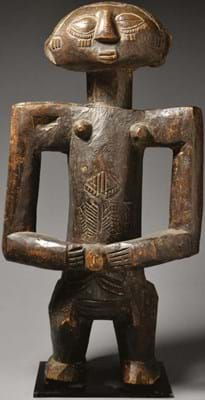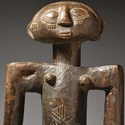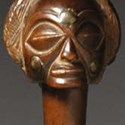The London dealer was one of more than 20 that gathered at this event held at the Mall Galleries in St James’s, London, from September 15-17 – coinciding with a busy agenda of events surrounding the queen’s state funeral.
Both the items in question had their ticket prices boosted thanks to their significant provenance to the Herbert Baker Collection, held at the Museum of Primitive Art New York for 48 years.
The Luba female figure crafted in 19th-20th century Democratic Republic of the Congo sold in the range of £10,000-20,000.
The second item was made of wood and metal, came from the Angola region and dated to the 19th century. It sold for a price in the region of £15,000-20,000.
Early finish
TAF made the difficult decision to close one day early, given the nearby preparations for the queen’s funeral and the security implications.
However, dealers from England, Amsterdam and New York enjoyed sales of small and big-ticket items, judging it successful given the circumstances.

A mid-19th century headrest and ladle combo of the Zulu people, South Africa, was sold at Tribal Art London by Marcuson & Hall with an asking price of £7000-10,000.
Overseas buyers
Also at the fair was Tom Hurst, the youngest of the exhibitors, for whom the event is a priority.
He observed a significant presence of overseas purchasers and found that the interest in spears and clubs was high as US buyers were keen to secure these artefacts to send back home.
Mark Eglington of Hudson New York attributed the noticeable rise in overseas buyers to the fact that there is a bigger demand for tribal antiquities in the US.
Collectors are eager to travel to find rare and increasingly niche objects.
Eglington’s front cover catalogue piece, a Kota Guardian statue formed of wood and metal copper alloy, had its fate sealed with a red dot on opening day.
Meanwhile, Ian Shaw, a British dealer in fine African tribal antiquities, made a four-figure sale leading to a new acquisition for the British Museum’s collection.
The item was a 19th century Togolese Ewe ceremonial robe dyed green, red, and orange.
The garment, which would have been worn by an elder, measured 10ft x 5ft 7in (3.05 x 1.7m).

















